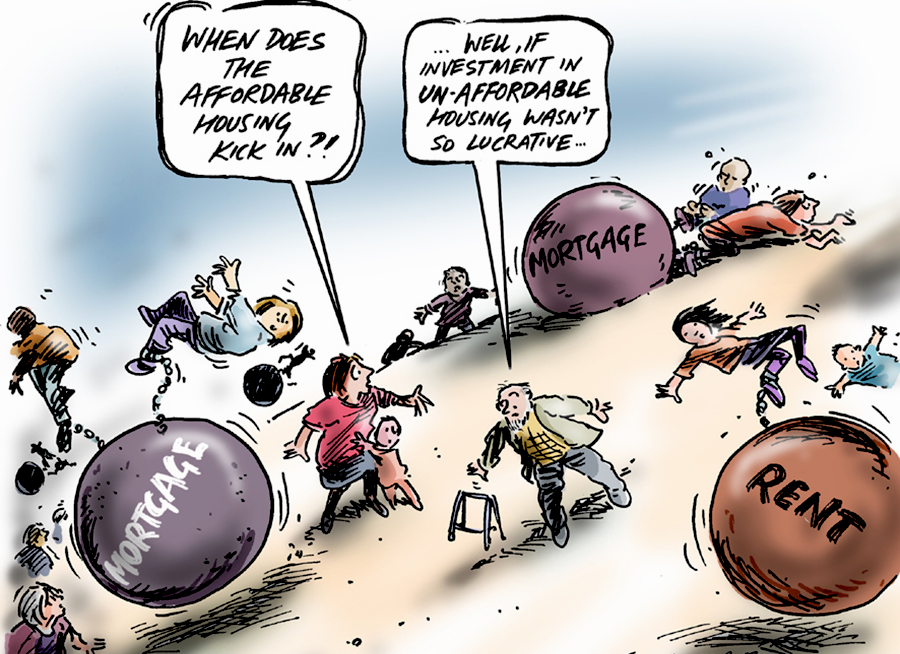Contributed by Joe Montero
The exorbitant cost of housing across Australia isn’t going down. It’s continuing to go up instead. The main driver at this time is rents. They have recorded staggering increases over the last year, by as much as 47 percent at Katanning in West Australia. In other places they have risen at least 10 percent. capital cities, regional centres and towns are affected.
The lack of affordable rental housing should be regarded as a national disgrace and cause an immediate response. Australians are being pushed into housing poverty. Other than a lack of a job, there is the biggest part of today’s cost of living crisis. This crisis won’t be solved without the measures to lower rents.

Some commentators are blaming the rent problem on a worsening shortage of dwellings. Maybe this is true in some places. Mostly in the inner-city locations near universities, which have experienced a new influx of international students. But it is not the general case. and when policy is based on the fallacy that it is, the effect is to make the problem even worse.
Housing unaffordability has been and is still being driven by a rising proportion of ownership in the hands of fund managers and corporations, able to take advantage of negative gearing provisions, tax breaks, and other forms of government support like public/private partnerships. Foreign based investors are provided with the added bonus of a five-year tax write off.
These benefits, it is claimed, help to overcome the supply shortage.
These fund managers and are not mainly in it to make profit form rents. Their interest lies in profiting from rising asset values.
Nevertheless, they can use their monopoly strength to influence the market through their control of a sizable portion of the stock by either not letting it or using monopoly power to raise rents.
Statistics on the degree of fund manager and corporate ownership are sketchy. This not an area that is being researched well. What we do have, provides somewhere between 12 and 30 percent of all housing stock. This might not seem like a lot. But when you consider that this portion is in a few hands and concentrated in the capitals, it becomes far more significant. Add that this sort of ownership mostly involves built to rent construction concentrated in the city centres and inner suburbs.
It is this part of the housing market that is driving up rents and real estate values everywhere, and therefore, a major cause of housing unaffordability.
Successive government, both federal and state have encouraged this development.
Creating more affordable housing must involve the curtailment of fund manager and corporate powered monopoly rent and put an end to incentives that have fed it, as well as public investment in public and other forms of community housing and imposing rent control.


Be the first to comment on "Rents are continuing to rise and contribute to the housing crisis"